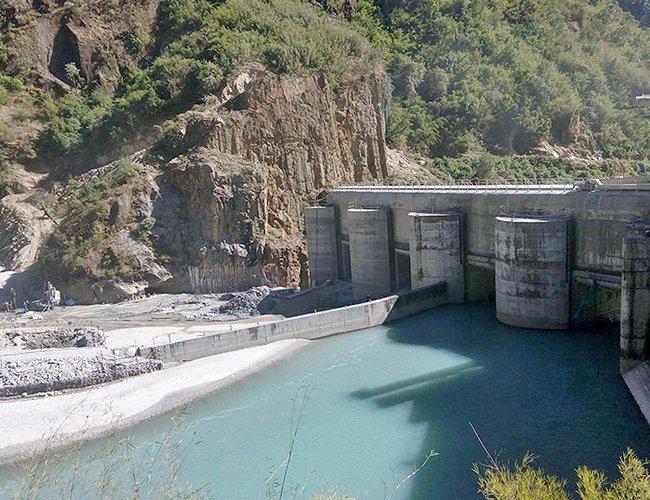
Those of us who remember the spiralling “dotcom” boom of the US market in the late 1990s are probably familiar with the term irrational exuberance. The man who made the term popular—Alan Greenspan—was a celebrity macro-economy manager heading the US federal reserve at that time and trying desperately to explain the insanity that was driving the US stock market. The spiralling prices of e-businesses with no product to sell looked irrational to many but how so many people could continue buying higher for such a long time was more perplexing to some than others. What appears evidently irrational to some and all the more exciting to many should, in normal course of time, give birth to the term irrational exuberance and it did.
Then there is the story of hydropower development in Nepal from the 2000s. After more than 15 years of load-shedding, a raging insurgency that ensured that no new investment went into hydropower, and piling incompetence at the Nepal Electricity Authority no Nepali would ever dream of switching the light on with the full confidence of turning it on. All that changes rather quickly after 2015. In comes an experienced load manager to head the NEA, the private sector begins to add close to a hundred megawatts every year, a brand-new transmission line that can import cheap coal-generated power from India gets commissioned shortly after; a few tweaks in demand management here and there and load-shedding disappears for good within two years.
Those two years shocked us into a frenzy of sorts. Energy ministers started setting targets like “10,000 megawatts in ten years, 20,000 megawatts in 15 years”; demand forecasters went as far as to say we would be consuming 17,000 megawatts by 2030 because of some latent demand that no Nepali noticed till then. New government-backed banks and hydropower development funds were being created almost overnight, at least on paper, easy licencing was promised at successive investment summits, and investment in hydropower became a stable agenda in all our bilateral meetings.
In this mad rush for power, Nepali energy planners did not find the time to put more rigour into our demand forecasting models or to cast a realistic eye on the regional markets where our surpluses would be theoretically sold. By late 2018, a faint murmur of doubt was becoming audible in certain circles. Independent power producers were getting gently worried, many of the Indian licence holders could never obtain financial closures for the export-oriented projects, the Chinese backed out of West Seti, and to add to the incoherence, random solar projects as large as 600 megawatts were being promoted further unnerving investors. The reality is neither our demand forecasting is reliable nor is the export market ready.
Let’s look at the demand first. At a population of approximately 30 million and per capita income of just over 1,000 dollars, Nepal’s current peak demand hovers around 1,600 megawatts. At this level of income, the average household will have lesser number of electrical appliances, industrial use of electricity would be lower, air conditioning demand would be lower, urbanization will be lower, and mass transit systems that use electricity not in existence. If all goes well, we are likely to double our income in the next 7-8 years. At that time, we would be using more appliances, more of us will be living in the cities, our industrial consumption would have grown further, and our population would have grown too. Let’s put all that in a mix, be a little generous, and say at 2,000 dollars of per capita income we will be consuming triple our current demand instead of double. That puts our demand to roughly 5,000 megawatts in eight years. This is not entirely off the mark because India’s National Capital Region with a per capita income of over 2,000 dollars and a population of 45 million has a peak summer demand of about 7,500 megawatts.
Now let’s look at where are have already reached in terms of supply. Our installed capacity is currently around 1,200 megawatts but the pipeline of new projects will readily take us to 2,000 megawatts in 18-24 months. NEA has already signed 5,600 megawatts of power purchase agreements with private producers and is showing no sign of slowing down. NEA and its conglomerate producers are likely to add another 3,000 mostly from peaking and storage types in the next 7-8 years. We are clearly looking at an installed capacity of 9-10,000 megawatts in the next 7-8 years already. To recall, 7-8 years is when our likely demand will be around 5,000 megawatts, if our economy continues to grow at about 7 percent. What that means is our dry season demand, when generation drops by almost 50 percent, will be fully met by domestic production and our wet season surpluses will be around 4-5,000 megawatts by 2027-28.
What would we do with the surplus power that starts at a few hundred megawatts in 2022 and reaches around 4,000 – 5,000 megawatts in 2027? The most reliable answer at this point of time is we don’t know. India and China are both surplus countries for the foreseeable future with enough hydropower of their own for peaking and grid stabilization purposes. China added 8,500 megawatts of hydropower in 2018 alone and is not slowing down. India has 12,500 megawatts in various stages of construction. India is also under pre-existing obligations to purchase up to 3,500 additional megawatts from Bhutan in the 2-5 years. Of course, all eyes are on Bangladesh, which is the only long-term electricity deficit country in the region. As absurd as it may sound, Nepal actually believes that India will allow it to sell electricity to Bangladesh through its soil while India itself considers Bangladesh a primary surplus dumping destination. Touting Bangladesh as a market is a poorly constructed deception technique.
None of this would be considered alarming if private banks were not exposed to this risk. On the contrary, of the likely 10,000 megawatts expected by 2027, there will be commercial bank exposure on up to 6,000 megawatts, with 70 percent of the construction cost coming from private commercial banks as loans. From this point on, the problem stops being an energy sector issue and starts becoming a banking sector crisis in the making. Without a hard look on our demand forecasting methods, a more realistic assessment of our pipeline, a circumspect stance on our export markets, and a serious leadership on regional grid integration the current exuberance already looks irrational. The political appetite for touting hydropower as the stairway to prosperity will not slow down until the crisis hits and that makes it a true case of irrational exuberance.

Sagar Prasai
Prasai is a freelance consultant based in Kathmandu. He frequently writes on water and energy issue for regional and international outlets
- Covid-19 In Nepal: Where Are We After 9 Weeks Of Lockdown?
- May 19, 2020
- C-19 Response In Nepal: Incompetence Was Expected But The Apathy Towards The Poor Is Astounding
- Apr 15, 2020
- Secularism Debate: Look Who’s Sneezing And Who’s Caught The Cold
- Mar 13, 2020
- The Indian Slowdown Could Dampen Nepal’s Electricity Export prospects Further
- Jan 03, 2020
- For smaller Countries In South Asia, intensifying India-China Competition In South Asia Is Becoming A Headache
- Nov 13, 2019
















